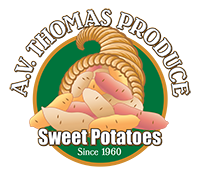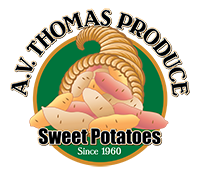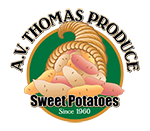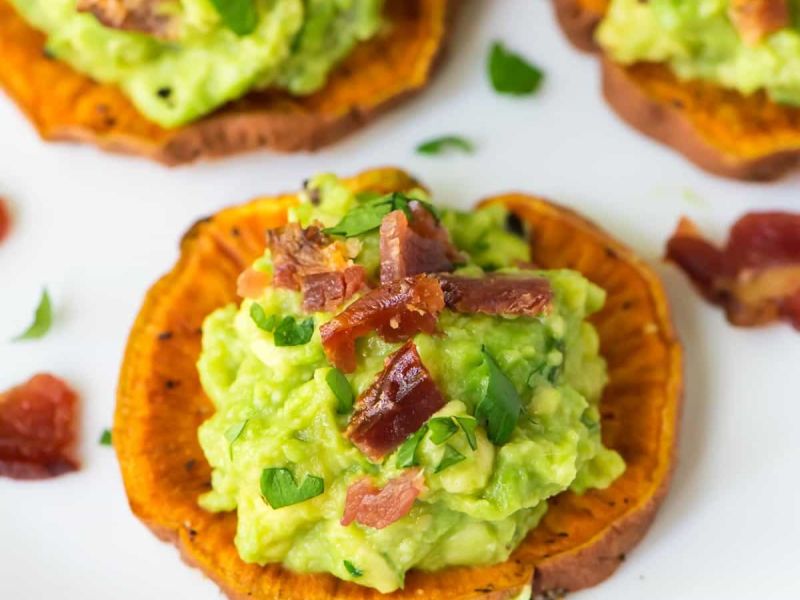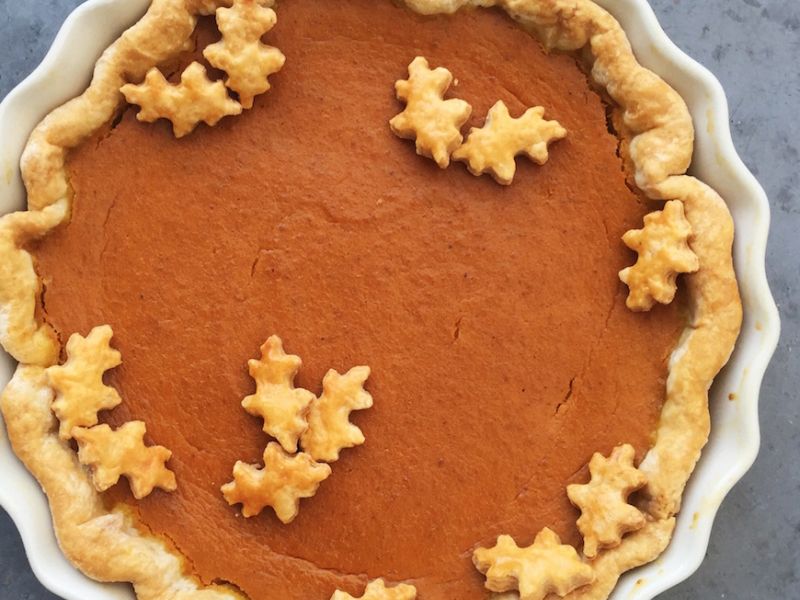CONVENTIONAL & ORGANIC SWEET POTATOES

NEED SWEET POTATOES?
• 7 Different Types
• Rush Loads
• FTL or LTL Delivery
CONVENTIONAL & ORGANIC SWEET POTATOES
LATEST NEWS
OUR MISSION

At A.V. Thomas Produce, we are committed to cultivating the freshest, healthiest, and most sustainable, certified organic and conventional sweet potatoes to nourish communities worldwide. Our mission is to grow, pack and distribute superior quality produce while upholding the highest standards of environmental stewardship, social responsibility, innovation, and customer satisfaction.
Innovation at Work
Sustainability
SWEET POTATO VARIETIES
Red Sweet Potatoes
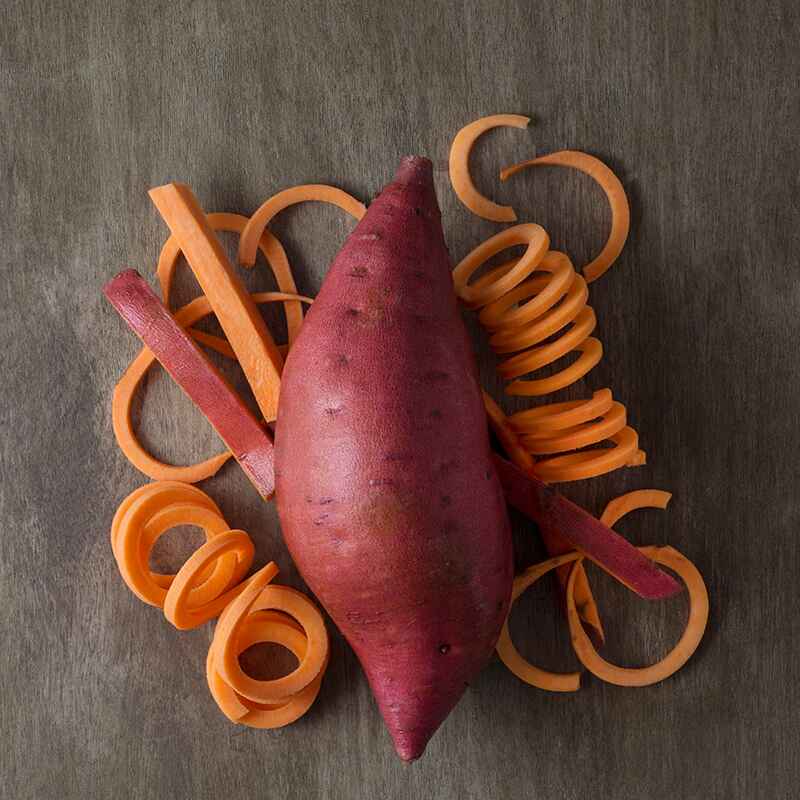
Extra-moist and flavorful, with orange flesh and a red-copper to plum skin color. Red sweet potato varieties include the Diane, Vermillion, Burgundy and Garnet.
Commonly referred to as “Yams”, red sweet potatoes are the most popular sweet potato west of the Rockies.
Orange Sweet Potatoes
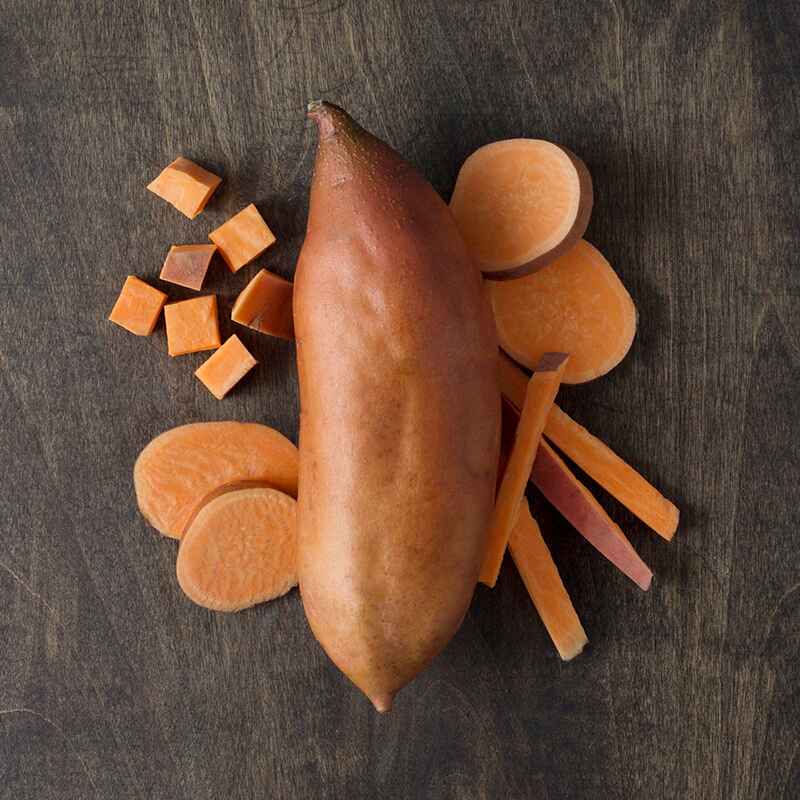
Bright orange flesh, copper-colored skin, moist and sweet to taste. Orange sweet potatoes are excellent for baking, roasting or in casseroles. Orange sweet potato varieties include the Covington, Belleview and Beauregard. Due to their popularity with growers on the East Coast—orange sweet potatoes are the most popular variety grown in the USA. West coast production is predominantly supported by the superior flavor and quality of product that is produced in California’s perfect growing conditions.
White Sweet Potatoes
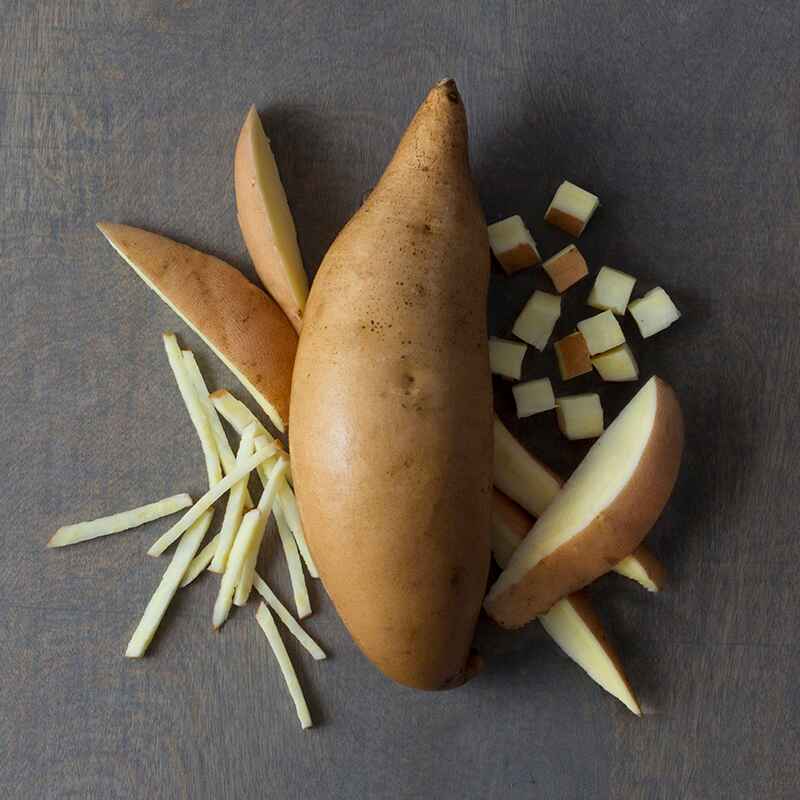
Yellow to cream-colored flesh and skin color. Slightly drier than the orange fleshed varieties, these semi-moist sweet potatoes have a mild, nutty taste. White sweet potato varieties include Bonita, O’Henry, DS White, Hannah and Jersey. They make excellent alternatives to standard Irish potatoes and are perfect in casseroles and side dishes, or simply baked and can elevate recipes beyond a traditional potato.
Japanese Sweet Potatoes
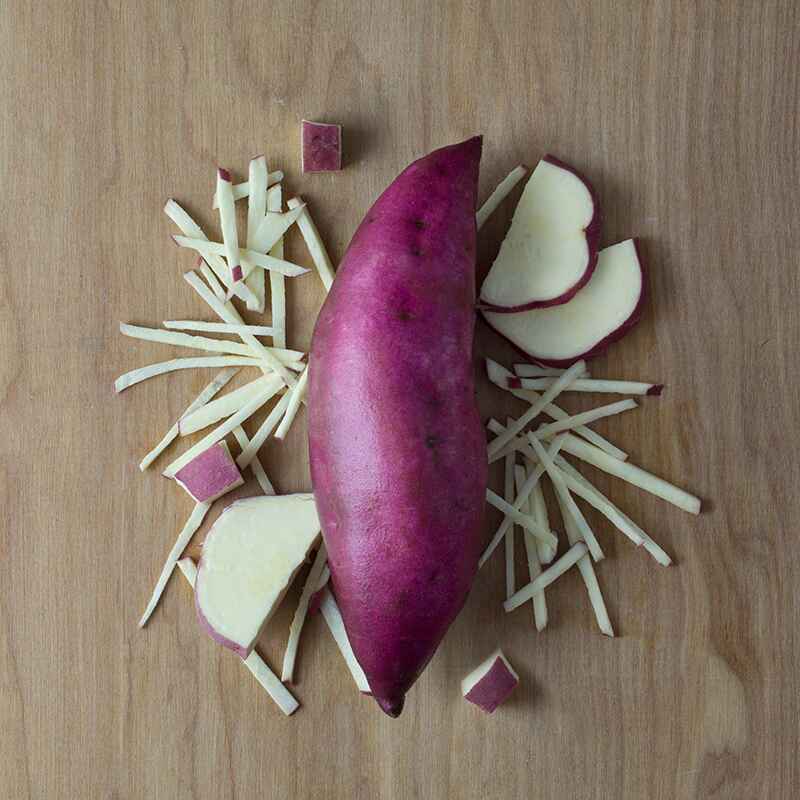
Dark red, almost purple skin with a creamy white flesh. The drier flesh of Japanese sweet potatoes allows for extreme versatility in the kitchen. These potatoes can be shredded, cubed, riced, or cut anyway one could imagine and then cooked without losing it’s shape which is great for soups, hashbrowns, fries, the sky’s the limit! Japanese sweet potato varieties include Murasaki and Kotobuki. Often referred to as Batatas, Bonatios, Oriental Sweetpotato or Korean Yam, these sweet potatoes are useful in any cuisine and can elevate even the simplest of dishes like a baked potato or potato salad.
Stokes™ Purple
Sweet Potatoes
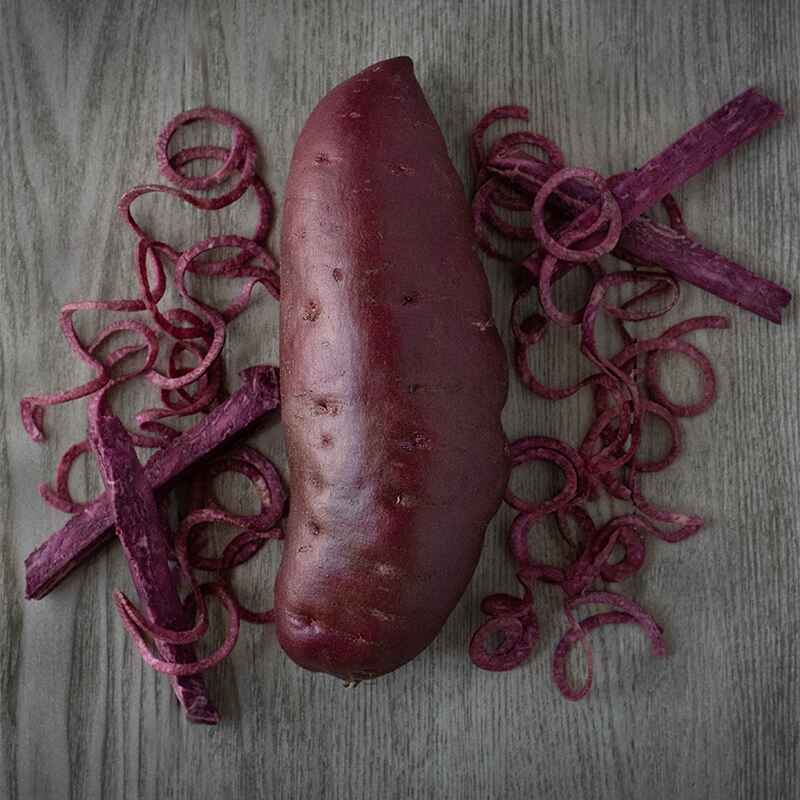
Dark purple skin and vibrant purple flesh, this unique proprietary variety is grown exclusively in California by A.V. Thomas Produce. It is most similar to the Japanese sweet potato characteristics in that it has a nutty and sweet flavor and dryer than orange flesh types of sweet potatoes. It can be used as an exotic alternative in recipes that call for regular potatoes.
Okinawa
Sweet Potatoes
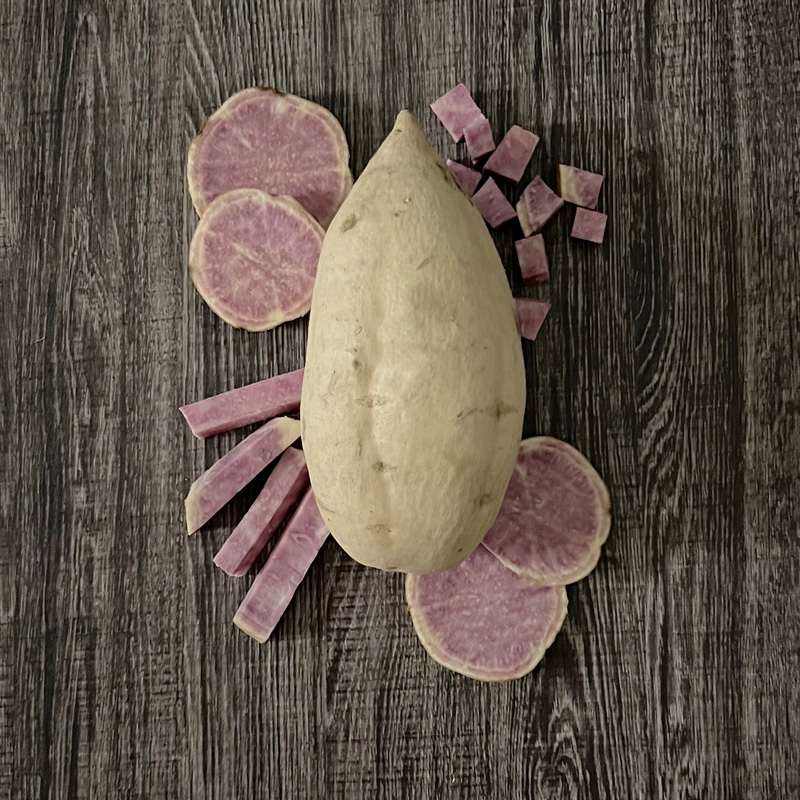
Pale white skin color with a lavender flesh that intensifies in color after cooking. Commonly referred to as Hawaiian Sweet Potato and is most popular in Polynesian and Japanese dishes. Prized for their high antioxidant levels, anthocyanin is the pigment which is responsible for the lavender color of the flesh. Mashed Okinawan Sweet Potatoes are a popular easy side dish which originated from the Hawaiian Island of Kauai.
Ben Yagi™ Purple
Sweet Potatoes
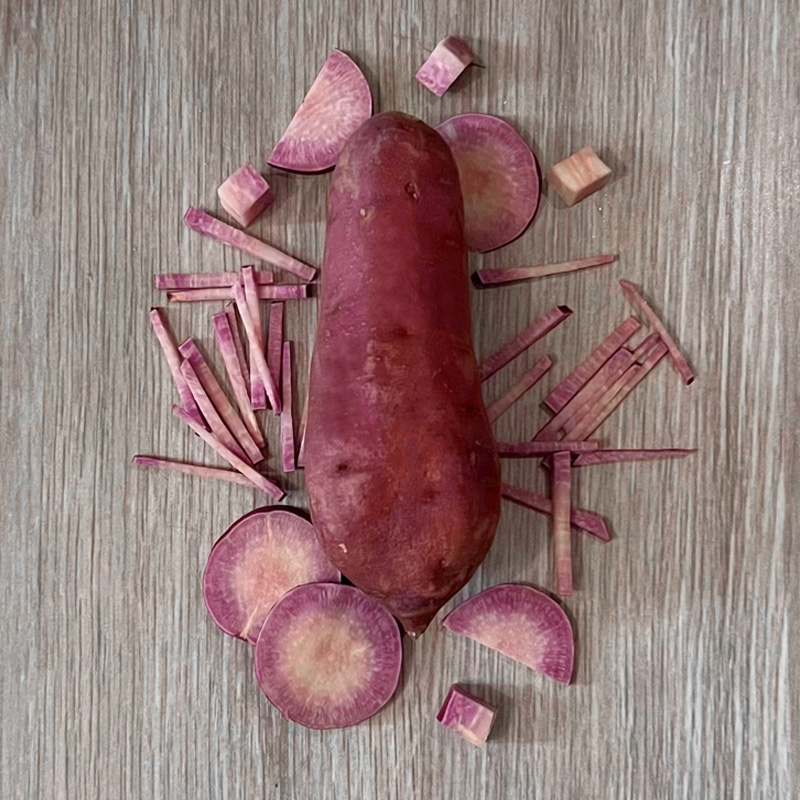
Lighter in color than Stokes Purple Sweet Potatoes, this delicate variety is available seasonally. Ben Yagi Sweet Potatoes have a tender semi-moist flesh and its vibrant hued coloring are another unique addition to the plate. Peak availability are during the fall and winter months, and will begin to taper off during the spring. Be sure to try these gems while their available!
CUSTOMER TESTIMONIALS
I am writing to compliment A.V.Thomas Produce for offering the best, most amazing and delicious sweet potatoes I have ever cooked for my family. I bought a 5 pound bag of Nature's Pride Organic Sweet Potatoes from Costco in San Diego the week before Thanksgiving. I baked them yesterday and I was impressed and thrilled with how evenly and beautifully they came out. What really got my attention was their shape (mostly footballs) and how easily the skin slipped off the potato.
When I bake them, I stab them for a little "vent" then put them on parchment paper on a cookie sheet at 350 for about 50 minutes. Your beautiful potatoes which are so evenly shaped peeled in seconds. I sliced the sugary "bottom" and the whole potato practically fell out of the peel.
So delicious and beautiful! Normally I don't write to food producers, but these potatoes are impressive!
LATEST RECIPES
Sweet Potato Pizza Snacks
Sweet Potato Bites with Avocado and Bacon
Pizza Sweet Potato Skins
That Sweet Potato Pie that everyone's talking about...
What’s the difference between a sweet potato and a yam?
Although orange-fleshed sweet potatoes have traditionally been referred to as “yams” in parts of the United States and Canada, they are not part of the same family as True Yams and therefore that are not actually “yams”. True Yams are cultivated in Africa, Asia, Latin America, The Caribbean and Oceania and not traditionally in the United States or Canada.
In the United States, it’s easier.
Today it is still accepted that the word “Yam” can be used to describe the moist orange fleshed varieties of sweet potatoes, though we advise using the proper term “Sweet Potato” or “Sweetpotato”.
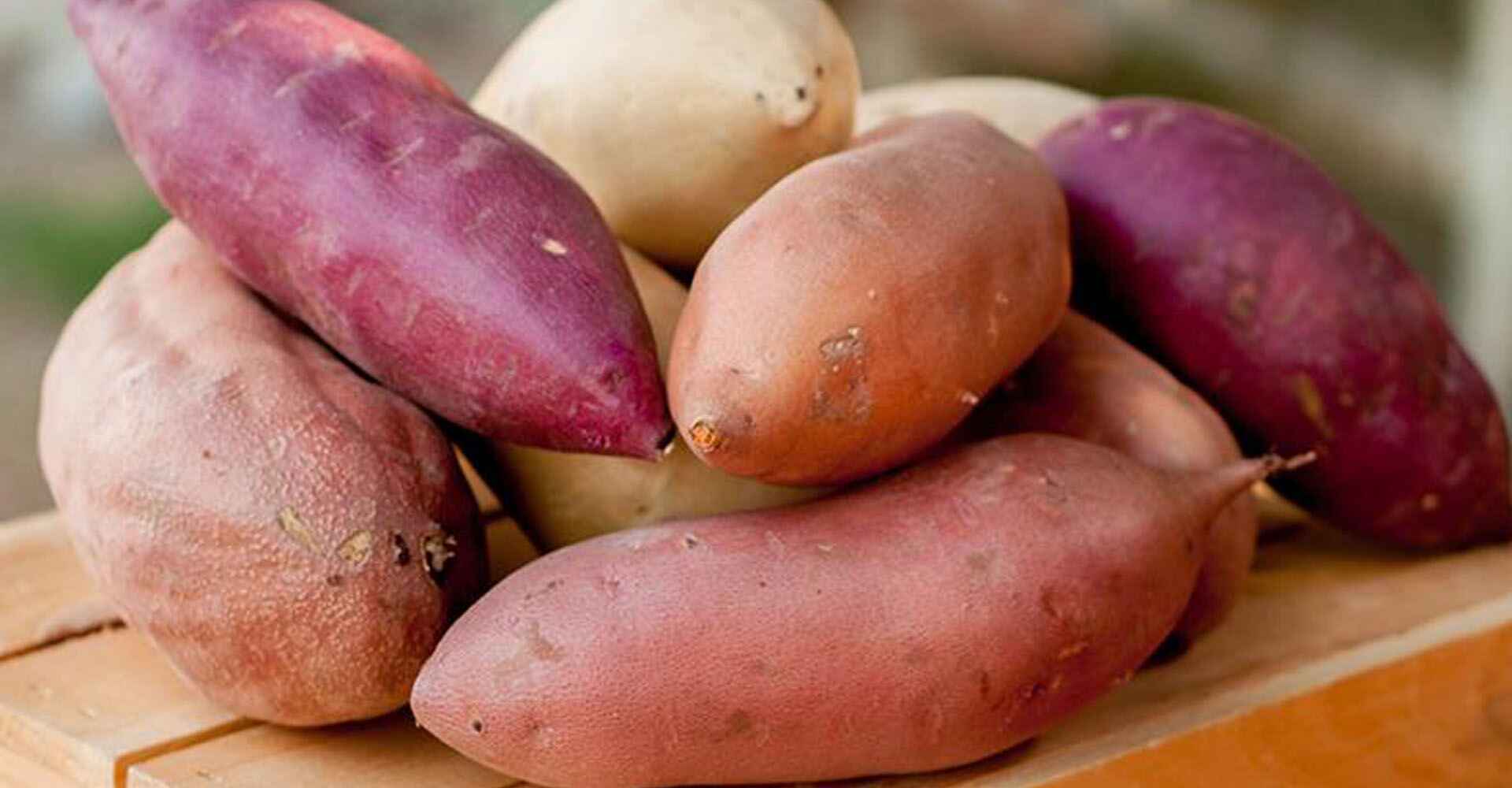
Can The Word "Yam"!

California sweet potato farmers are on a mission to end consumer confusion, entice younger buyers and increase retail sales of this superfood, according to a news release.
It’s very likely that many shoppers who come into the store looking for sweet potatoes are walking away confused and empty-handed, when what they see on the shelf is labeled a yam, or perhaps it’s the reverse — they’re looking for yams, but the sign says sweet potato.
To clear things up, the California Sweet Potato Council has launched a campaign for California retailers that aims to educate consumers and drive sales of sweet potatoes.
The message to consumers is simple: "Yams = Sweet Potatoes"
Sweet potatoes come in all kinds of colors — red, orange, white and even purple. You may see moist orange flesh varieties of sweet potatoes labeled as yams in the grocery store, but they’re actually sweet potatoes. True yams are very different from sweet potatoes and are a starchy, tuberous vegetable mostly grown in Africa. These are not grown and are largely not available in the U.S., despite what you might see on display signs.
NATURE'S SUPERFOOD

